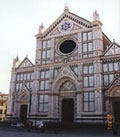- Latest Archaeology Updates
- Importance and applicability
- Famous Archaeologists
- Museums Collections
- Site Map
- World Heritage Sites
- World History Monuments
- Archaeological Organizations
- World Atlas of Archaeology
- Forensic Investigation and Geophysics
- Contact Us
- Movies based on Archaeology
- Frequently Asked Questions
- Archaeological discoveries
- Tell a Friend
- Archaeological Abbreviations
- Gallery Collections
- Famous-Museums site map
- Famous-archaeologists site map
- Archaeological Monuments site map
The collection's first foundations were the family collections of the Medici and Lorraine, with several transfers from the Uffizi up to 1890 (except the collections of marble sculpture which the Uffizi already possessed). The Egyptian section was first formed in the first half of the 18th century from part of the collections of Pierre Leopold de Toscane, from another part of an expedition promoted by the same Grand Duke in 1828-29 and led by Ippolito Rosellini and Champollion (the man who first deciphered hieroglyphics). In 1987 a new topographic museum on the Etruscans was added, but it was destroyed in the 1966 floods.
The National Archaeological Museum of Florence is one of the largest and most important museums in Europe. Located in the heart of Florence, it houses an extensive collection of ancient artifacts from all over the Mediterranean region. The museum is home to a variety of impressive sculptures, ceramics, coins, jewelry, and other artifacts that date back to the Etruscan, Roman, and Greek periods. The museum's collection is divided into themed rooms that each focus on a particular period or a specific type of artifact.
The Etruscan Room, for example, contains a rich collection of Etruscan funerary objects, while the Greek Room contains a wide range of Greek vases and sculptures. The museum also houses a large collection of coins and jewelry, including coins from the Roman Empire and ancient jewels from the Mediterranean region. The National Archaeological Museum of Florence also contains a variety of temporary exhibitions that are dedicated to specific topics or artifacts. These exhibitions often explore the history of the Mediterranean region, its various cultures, and its art and artifacts. The museum also organizes educational programs and lectures for students and visitors, making it a great resource for learning about the region’s history and culture.

